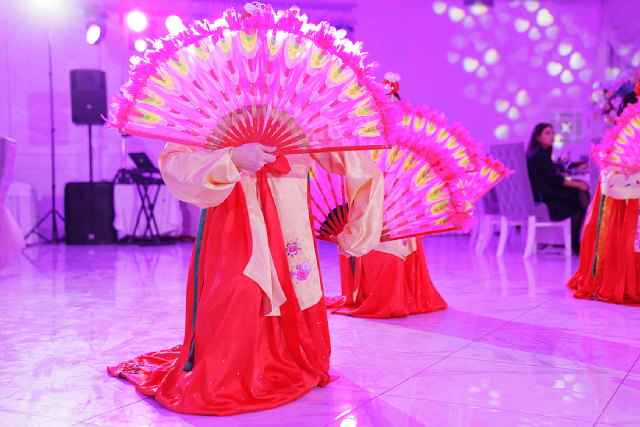Korean festivals and celebrations are a vibrant and colourful tapestry of tradition that reflects the country’s rich cultural heritage. From the lively music and dance of the Boryeong Mud Festival to the solemn ceremonies of Chuseok, Korean festivals and celebrations offer a window into the unique customs and traditions of the country. In this article, we will explore some of Korea’s most popular festivals and celebrations.
1. Chuseok
Chuseok, also known as the Korean Thanksgiving, is one of the most important holidays in Korea. Chuseok is a three-day harvest festival celebrated in September or October, where families come together to honour their ancestors and share traditional foods. The festival is marked by the exchange of gifts and the performance of ancestral rites, and many Koreans travel to their hometowns to spend time with their families.
2. Boryeong Mud Festival
Boryeong Mud Festival is a popular summer festival held in July in the city of Boryeong. The festival’s mud-based activities include mud wrestling, mud slides, and mud baths. It also features live music, food stalls, and a variety of other activities.
3. Seollal
The Seollal festival, also known as the Lunar New Year, is a three-day celebration that marks the beginning of the lunar calendar. Commemorated in January or February, Seollal is a time for family gatherings, traditional foods, and the exchange of gifts. The festival is marked by the performance of ancestral rites, where Koreans pay their respects to their ancestors and seek their blessings for the coming year.
4. Jeju Fire Festival
The Jeju Fire Festival is a unique cultural event held on Jeju Island in March. The festival features the lighting of huge bonfires and the performance of traditional dances and music. The festival is said to drive away evil spirits and bring good luck for the coming year.
5. Lotus Lantern Festival
The Lotus Lantern Festival is a colourful celebration of Buddha’s birthday held in May in Seoul. The festival features lantern-making workshops, parades, and the lighting of thousands of lotus-shaped lanterns. The festival is a beautiful display of Korean culture and Buddhist tradition.
6. Gimje Horizon Festival
Finally, the Gimje Horizon Festival is held in October in the city of Gimje and is one of Korea’s most important agricultural festivals. The festival is a celebration of the rice harvest. It features a variety of traditional activities, such as rice threshing and planting, as well as cultural performances, parades, and food stalls. The festival is an excellent opportunity to experience the traditional rural life of Korea and learn about the importance of agriculture in Korean culture.
7. Andong Mask Dance Festival
The Andong Mask Dance Festival is a popular cultural event held in Andong in September or October. The festival features traditional mask dances that date back to the Joseon Dynasty, as well as other cultural activities such as craft workshops, traditional food stalls, and a parade. The festival is a great way to experience Korea’s unique and vibrant traditional culture and learn about the importance of masks in Korean culture, which were used in shamanistic rituals and storytelling performances.
Conclusion
Korean festivals and celebrations are a colourful tapestry of tradition that offers a window into the unique customs and traditions of the country. From the solemn ceremonies of Chuseok to the lively festivities of the Boryeong Mud Festival, Korean festivals and celebrations showcase the country’s rich cultural heritage. Whether you’re a fan of traditional foods, music, or dance, Korean festivals and celebrations offer something for everyone to enjoy.
Are you looking to visit Korea to witness these gorgeous and fun festivals for yourself? Why not pick up some Korean while you’re at it? Ingratiate yourself with the locals and gain deeper cultural insight by taking Korean language courses with Sejong. We are staffed with dedicated teachers equipped with a detailed curriculum that will have you speaking like a native in no time! Contact us today to learn more.


